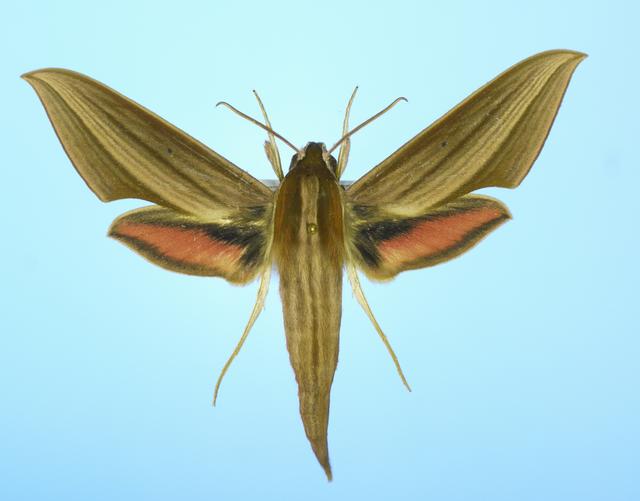Mark Vincent
Mark Vincent of Southampton, England, has recently sent me some images and notes.

Xylophanes cthulhu, Coban, near Alta Verapaz, Guatemala,
October 27, 2010, courtesy of Mark Vincent.
Mark Vincent writes, "Xylophanes cthulhu is distinguishable from Xylophanes neoptolemus
by being brighter with a more acutely falcate tip to the forewing, a pure black basal area to the hindwing and by the golden yellow band between the
1rst and 4th postmedian lines on the forewing underside (contrasting with the reddish orange tone of the ground colour of the rest of the wing).
X. neoptolemus is less brightly coloured with a less contrasting upperside forewing pattern, no golden yellow band on the forewing underside but with a
distinct dashed postmedian line marked by black vein dots on both the forewing and hindwing underside.
"X. cthulu is widespread in lowland rainforest throughout Central America.
"It appears that it is replaced in South America by X. neoptolemus."

Xylophanes lamontagnei male, Rio Satipo, Junin, Peru,
courtesy of Mark Vincent.
Mark Vincent writes, "This species is easily distinguished from X. ceratomioides by the cream coloured hindwing postmedian band which,
unlike ceratomioides, is separated by dark lines along the veins into distinct lunules."
Use your browser "Back" button to return to the previous page.
This page is brought to you by
Bill Oehlke and the
WLSS. Pages are on space rented from Bizland. If you would like
to become a "Patron of the Sphingidae Site", contact Bill.
Please send sightings/images to Bill. I will do my best to respond to
requests for identification help.
Enjoy one of nature's wonderments: Live
Saturniidae (Giant Silkmoth) cocoons.
 | 
Show appreciation for this site by clicking on flashing butterfly to the left.
The link will take you to a page with links to many insect sites. |



